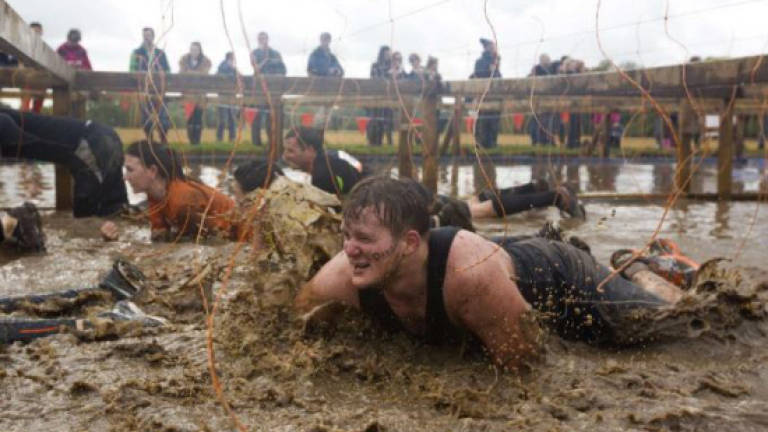From monkey bars to Olympic dreams, Obstacle Course Racing goes global

HENLEY ON THAMES, United Kingdom: "Gimme a hoo-rah! Gimme a hell yeah!" a man shouts out from a podium to the hundreds of bouncing lycra-clad people below, pumping the air with their fists.
"Are you reeeaaaadyyyy?"
"Three, two, one, Go!
A foghorn booms, orange smoke billows out and a handful of the weekend's 20,000 participants stream across the start line.
What awaits is 19.3 km of hills, mud and 26 of some of the craziest and silliest obstacles designed to test physical and mental strength, teamwork and stamina.
From plunging into ice-cold water, crawling through tight tubes, scaling sky-high walls and even running through a field of live electricity wires, participants are pushed to the limit on the military-style course known as Tough Mudder.
"I've done one before and I really enjoyed it," said David Knowles, Managing Director of marketing firm bda, as he crossed the finish line with 18 colleagues at an event an hour's drive west of London.
"It's a challenge. Going through some of the water-based obstacles, it's been quite hard and quite tough. It takes a lot of mental endurance as well as physical."
Set up in 2010, Tough Mudder was at the forefront of what Obstacle Course Racing (OCR) aficionados say is the world's fastest growing sport. From the first three events in 2010, revenue grew 3,207% in five years to reach an annual turnover of US$100 million (RM418 million) in 2015 and expanding to 10 countries by 2016.
"All my Harvard business professors told me I was stupid and it would never work," co-founder and CEO Will Dean told AFP.
"But here we are now, 500,000 people doing the event this year, 2.5 million people having done the event worldwide."
Camaraderie
Dean was inspired to set up Tough Mudder when, during a triathlon, a fellow competitor refused to help him with a jammed wetsuit zipper. He set out to design a challenge that wasn't timed and where teamwork was a core part of the experience.
"Tough Mudder isn't an elite event, it's about teamwork and camaraderie and doing your best. We have people here today who have serious issues, amputations, alcoholism. This is a story about people challenging themselves and being the best version of themselves."
But for others, it is about racing. Obstacle Course Racing has exploded in recent years with a plethora of different events and themes lasting from a few hours to 24-hour marathons.
According to Running in USA, an estimated 5.9 million people will participate in an obstacle race in 2016 with a 40-fold increase in the United States over the past five years.
Joe De Sena began Spartan Race in 2007 with an aim to build a whole new genre of sport.
"When I founded Spartan Race, I maintained from day one that it would be a legitimate sport with rules, rankings, officiating, and a championship that allowed the best athletes in the world to compete against each other," he said.
In 2012, De Sena set up the Spartan World Championship and the franchise has expanded into fitness, education, nutrition and two TV shows in the US.
To legitimise the sport, the International Obstacle Racing Federation (IORF) was founded in 2013. Its president Ian Adamson says the first step is international recognition but admits that many athletes and brands are pushing for OCR to be included in the Olympic and Paralympic Games.
The reigning World Champion Jonathan Albon, who will be defending his title at the OCR World Championship that kicks off in the Blue Mountains, Canada on Thursday, explains the growing appeal.
"A lot of the time you're out in the wilderness and nature, that's really nice but then you come back to the events centre and have obstacles where there are big crowds watching which gives you a great feeling as well," the 27-year-old Brit said after participating in the first UK race organised by Nordic OCR group Toughest. — AFP